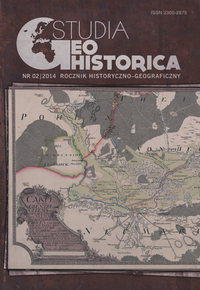Ruda-Skroda. Przyczynek do dziejów rudnictwa żelaza na Wysoczyźnie Kolneńskiej w średniowieczu i na początku doby nowożytnej
Ruda-Skroda. A contribution to the history of iron ore mining in the Kolno Highland region in the Middle Ages and at the beginning of the modern period
Author(s): Elżbieta Kowalczyk-HeymanSubject(s): Regional Geography, Economic history, Middle Ages
Published by: Polskie Towarzystwo Historyczne
Keywords: średniowiecze;rudnictwo żelaza;Mazowsze;Wysoczyzna Koleńska;młyn wodny;Middle Ages;ore industry;Mazovia;Kolno Highland;watermill
Summary/Abstract: The present article is concerned with the problem which has been so far neglected by the scientists dealing with the Mazovian history. This is the history of iron ore mining on the example of two settlements, namely Ruda-Skroda and Rudka-Skroda, situated on the fringes of the Kolno Highland, on the river Skoda, the left-side tributary of the river Pisa. Luckily, two oldest acts initiating the establishment of both villages and ironworks, from 1416 and 1461, were preserved. Th e documents determined the scope of rights and duties of the recipients of the rights, ore miner Jan from Przasnysz and his son Klemens. An important element of those documents was the establishment of the right to exploit the Duke’s forest Zagajnica by mining iron ore, wood burning and logging as well as building a bridge on the river Pisa, which facilitated transport. What can be interesting to the reader is the fact that ore mills and ironworks were situated in both localities until modern times, with another building of a mill in Ruda-Skroda, from the 19th c., existing till now, while the mill has been converted into an electrically powered grain mill.
Journal: Studia Geohistorica
- Issue Year: 2014
- Issue No: 2
- Page Range: 85-98
- Page Count: 14
- Language: Polish

